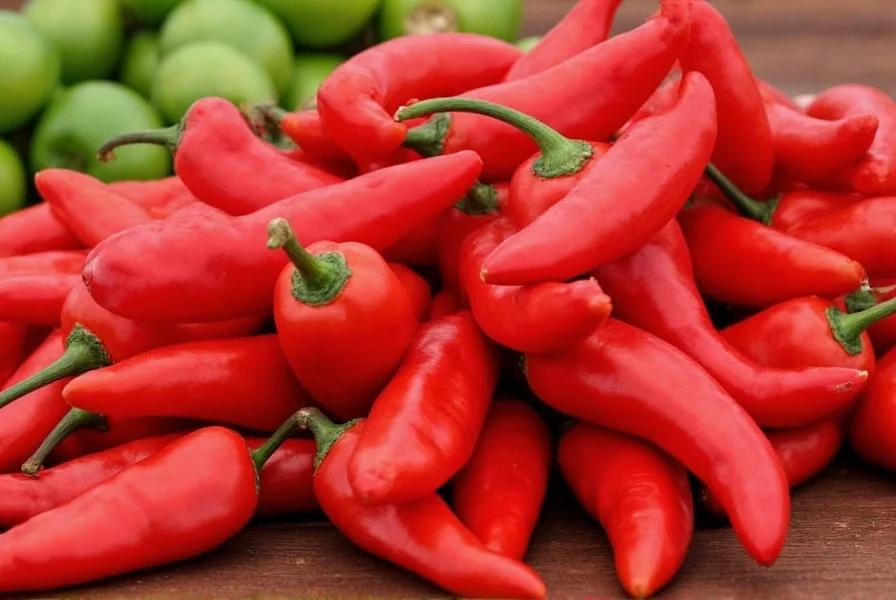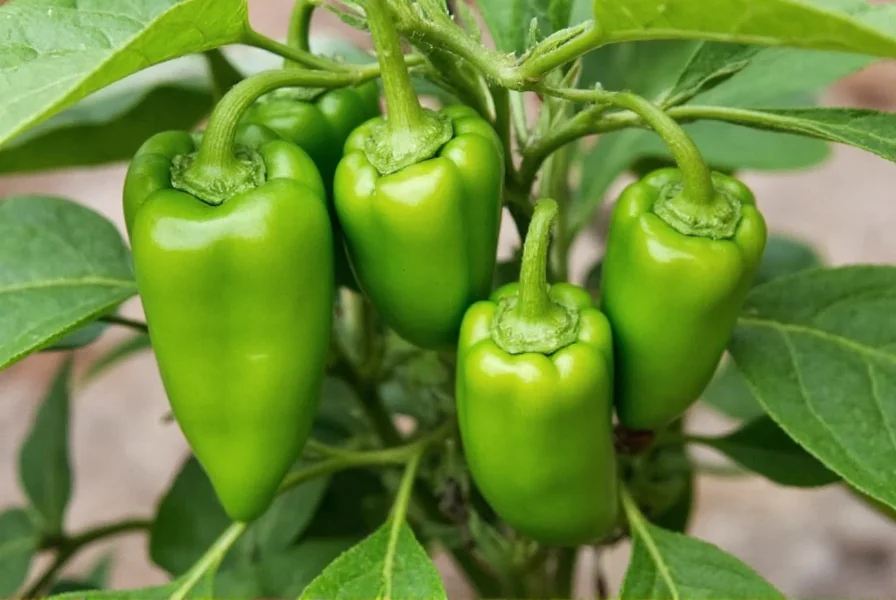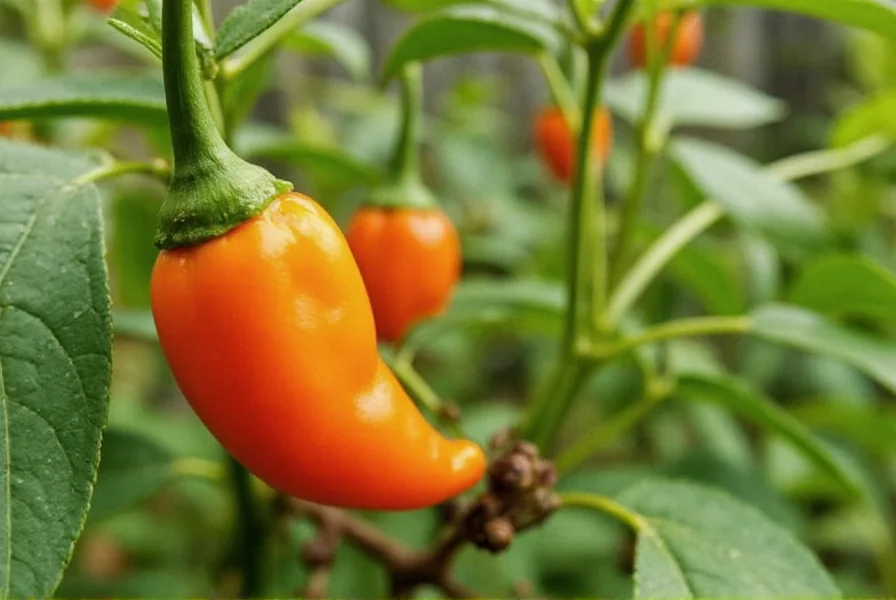Cayenne pepper seeds represent the starting point for growing one of the world's most popular hot peppers. Understanding their characteristics and requirements helps gardeners achieve successful harvests of these vibrant red peppers known for their distinctive heat and culinary versatility.
Understanding Cayenne Pepper Seeds Characteristics
Cayenne pepper seeds measure approximately 3-5mm in length and have a pale yellow to light tan color when mature. Unlike what many believe, the seeds themselves contain minimal capsaicin—the compound that creates heat in peppers. The highest concentration resides in the placental tissue (the white pith) surrounding the seeds. This explains why removing this membrane reduces heat significantly when cooking with fresh cayenne peppers.
When evaluating cayenne pepper seeds planting guide options, gardeners should note that these seeds require specific germination conditions. They typically sprout within 7-21 days when maintained at temperatures between 75-85°F (24-29°C). Lower temperatures significantly delay germination, while excessive heat can prevent it altogether.

Optimal Growing Conditions for Cayenne Pepper Seeds
Successful cultivation of cayenne peppers begins with proper seed starting techniques. For those following a cayenne pepper seeds germination time schedule, start seeds indoors 8-10 weeks before the last expected frost date in your region. Use seed trays with individual cells filled with a sterile seed-starting mix that provides excellent drainage.
The best soil for cayenne pepper seeds maintains a pH between 6.0-6.8 and contains ample organic matter. Amend garden soil with compost before transplanting seedlings outdoors. Cayenne peppers thrive in full sun exposure (6-8 hours daily) and require consistent moisture without waterlogging. During fruit development, slightly reducing water can intensify heat levels in the mature peppers.
| Growth Stage | Temperature Range | Days to Maturity | Watering Needs |
|---|---|---|---|
| Germination | 75-85°F (24-29°C) | 7-21 days | Keep soil moist but not soggy |
| Seedling Growth | 70-80°F (21-27°C) | 4-6 weeks | Light, frequent watering |
| Flowering & Fruit Set | 75-85°F (24-29°C) | 60-80 days after transplant | Moderate, consistent moisture |
| Ripening | 70-85°F (21-29°C) | 90-120 days from transplant | Slightly reduced watering |
Harvesting and Using Cayenne Pepper Seeds
When harvesting cayenne peppers for seed collection, select fully mature, vibrant red peppers that have reached their maximum length (typically 6-10 inches). Allow these peppers to dry completely before extracting seeds. The cayenne pepper seeds storage methods that preserve viability include placing dried seeds in airtight containers with silica gel packets and storing them in a cool, dark location.
Many gardeners wonder are cayenne pepper seeds hot when handling them. While the seeds contain minimal capsaicin compared to the placental tissue, they still carry some heat compounds. Always wear gloves when processing hot peppers and avoid touching your face. The heat level of cayenne peppers typically ranges from 30,000 to 50,000 Scoville Heat Units (SHU), placing them firmly in the hot pepper category.
Common Challenges with Cayenne Pepper Seeds
Gardeners often encounter challenges with cayenne pepper seeds planting temperature requirements. Temperatures below 60°F (15°C) can cause stunted growth or complete failure to germinate. Similarly, inconsistent moisture during germination leads to poor seedling development.
Pests like aphids and spider mites can damage young seedlings, while fungal diseases such as damping-off can destroy emerging plants. Starting seeds indoors with proper air circulation and avoiding overwatering significantly reduces these risks. For those following a growing cayenne peppers from seed to harvest timeline, expect 90-120 days from transplanting seedlings to harvesting mature red peppers.
Cayenne Pepper Seeds vs Other Hot Pepper Varieties
When comparing cayenne pepper seeds vs regular pepper seeds, several distinctions emerge. Cayenne seeds produce longer, thinner peppers compared to jalapeños or serranos. The heat profile differs as well—cayenne delivers a sharp, immediate heat that builds gradually, whereas habaneros offer intense fruity heat that peaks quickly.
Unlike bell peppers, which contain no capsaicin, cayenne seeds come from plants specifically bred for heat production. The seeds themselves may look similar across pepper varieties, but the genetic potential for heat production varies dramatically between types.

Practical Applications of Cayenne Pepper Seeds
Beyond gardening, cayenne pepper seeds have multiple applications. In culinary contexts, dried and ground cayenne seeds become the familiar red cayenne pepper spice. Some cultures use cayenne seed extracts for traditional remedies, though scientific evidence for many health claims remains limited.
For gardeners interested in seed saving, cayenne peppers typically don't cross-pollinate with other species within the Capsicum annuum family, making them relatively straightforward to save seeds from. However, they can cross with other C. annuum varieties like jalapeños or bell peppers if grown in close proximity.
Frequently Asked Questions
Can you eat cayenne pepper seeds directly?
Yes, you can eat cayenne pepper seeds, but they contain minimal heat compared to the white pith surrounding them. The seeds themselves have a slightly bitter, nutty flavor. Most of the capsaicin concentration resides in the placental tissue, not the seeds. When using fresh cayenne peppers in cooking, removing the seeds and white membranes significantly reduces the heat level.
How long do cayenne pepper seeds remain viable for planting?
Properly stored cayenne pepper seeds maintain good viability for 2-4 years. To maximize longevity, store seeds in an airtight container with silica gel desiccant in a cool, dark location around 40°F (4°C). Refrigeration extends viability, while freezing can preserve seeds for up to 10 years. Test older seeds by placing 10 on a damp paper towel in a sealed bag to check germination rate before planting.
Do cayenne pepper seeds need light to germinate?
No, cayenne pepper seeds do not require light for germination and actually germinate better in darkness. Cover seeds with 1/4 inch of seed starting mix after planting. Once seedlings emerge and develop their first true leaves, they require bright light (14-16 hours daily) for healthy growth. Providing insufficient light after germination causes leggy, weak seedlings that struggle after transplanting.
What's the ideal soil temperature for planting cayenne pepper seeds outdoors?
The ideal soil temperature for transplanting cayenne pepper seedlings outdoors is consistently above 65°F (18°C), with optimal growth occurring between 75-85°F (24-29°C). Use a soil thermometer to verify temperatures at planting depth for several consecutive days before transplanting. Cold soil below 60°F (15°C) stunts growth and increases disease susceptibility. Consider using black plastic mulch to warm garden beds before transplanting.
How many cayenne peppers can one plant produce from a single seed?
A healthy cayenne pepper plant typically produces 25-50 peppers per growing season when grown in optimal conditions. Factors affecting yield include climate, soil quality, watering practices, and pest management. Plants grown in containers usually produce fewer peppers than those in garden beds. The first fruits often develop 60-80 days after transplanting, with continuous production throughout the warm season until frost.











 浙公网安备
33010002000092号
浙公网安备
33010002000092号 浙B2-20120091-4
浙B2-20120091-4